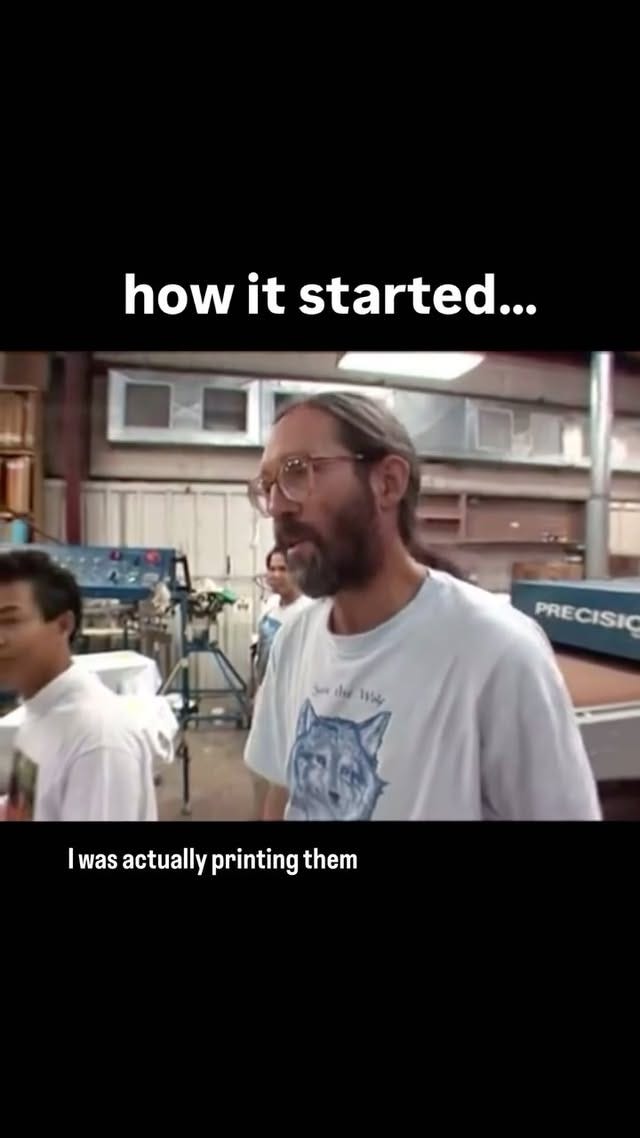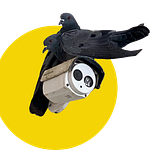When a new technology comes around, there is a lot of uncertainty and worry. One way we try to understand is to look at the past and find analogies or comparisons. Trying to draw parallels with something we believe we know. The same is happening with this relatively new kid on the block called AI. Over the past few years, I have heard people comparing AI to everything, from literal fire and wheel to Printing, Calculators and the Internet. I think a better comparison would be plastic. Because the way I see it, AI is more like a half-processed raw material rather than a tool. This becomes evident if we try to look at it from the perspectives of creators and even consumers when I think about it. Let me cook.
That was the famous Moonlight Sonata, specifically the third movement, by Ludwig Van Beethoven. When I try to imagine Beethoven playing this, I see a person with messy hair hunched over a grand piano, gently pressing each of those pearly white and ebony keys to play this ear orgasm.
Those keys used to be made of elephant's tusk. Ivory has been a big part of human evolution and progress. Now, Ivory can be the horn or tusk of any mammal. But it's primarily elephants, even the word Ivory has its origin from the ancient Egyptian word for elephant. Ivory is a fascinating material. It's dense, it's white, and it can be easily shaped into almost anything. Ivory was even used to make the balls for billiards. In fact, it is also a very difficult job and there are specialised ivory turners who make these white cue balls with ivory.
But the biggest problem with ivory is, it's costly. Some estimates say that between 1850 and 1914, around 2.8 million elephants were killed for their tusk. Definitely, people were less bothered by the cost of killing these elephants, rather the low supply meant a high price. So naturally, people tried finding alternatives.
In 1839 vulcanisation of rubber was invented. This made rubber harder and more useful. This also paved the way for Alexander Parkes to create Parkesine. Parkesnie was made from cellulose – a natural product from plants – and it was mouldable when heated and kept its shape when cooled. Parkesin was way too costly to produce so it was never widely used. But this was the first man made plastic the world, or a tiny elite part of the world, saw.
In 1909 something truly magical happened. Leo Baekeland invented Bakelite, apart from being extremely creative with names, this was the first fully synthetic plastic. Bakelite was heat-resistant, durable, and suitable for mass production. It was even called "the material of a thousand uses". What followed was a revolution. Communication over long distances became easier because telephones were being made with bakelite. Cooking became easier because Bakelite can be used to make heat-resistant handles. In fact, young artists were some of the early adopters and even proponents of plastic. Here's the artist, I hope I don't butcher the pronunciation, Jorge Caicedo Montes de Oca on Bakelite.
Truly, there were more than a thousand uses and this put the age of plastic into overdrive.
Plastic as a material is truly magical. It helped people design and develop new things, much faster and cheaper. One of my favourite designs ever is the famous Monoblock Chair. I am pretty sure each and every one of us has seen or interacted with one in our lives. This is the image that comes into our mind when we say ‘Plastic Chair’. I am pretty sure, when I was born there was one of these plastic Monoblock chairs in the hospital maternity ward and I am sitting on one right now.
I can’t fathom the amount of life plastic has saved. But what about the other side of the coin?
In September 1966, a pair of researchers, Karl W. Kenyon and Eugene Kridler traveled to Hawaii’s Southeast Island. The fact that marine birds like seagulls eat non-digestible material like pumice stones and nut shells was well documented. But they found something quite interesting when they checked the intestine of Albatros on the beaches of Hawaii. Plastic. Out of 100 Albatros carcasses they checked, there counted a total of 241 pieces of plastic.
The few people who had the sad fate of discussing things with me might feel suspicious. Because plastic has not been something that has bothered me much. To be frank, I have either always avoided the topic altogether or have played the devil’s unpaid advocate in the discussions around the harms caused by plastic.
I think, for me this comes from a place of moral dilemma. You see, I don’t want to call plastic evil because my uncreative brain can’t think of a world without it. Yet I know that it’s killing us all, from the inside. And as microplastics they are truly everywhere. In fact I am pretty sure that the equipments we need to test the presence of microplastics have plastics in them or at least in their production.
You might be thinking, but how in the world is it then similar to AI?
I have been trying to understand AI and I think it has become a perpetual mental scab that I can’t stop picking. I think about it quite a lot. Maybe my otherworldly screen time has something to do with it maybe it's an interesting medium to be curious about. Every day something or the other pops out about AI. Right now all the rage is AI Agents, whatever that means. On a side note: even the so-called tech leaders are struggling to define what an AI agent is. Tech Crunch has a really meaty report on it. Link in the show notes.
But the other day I came across an article shared by an Instagram page called ‘Katha by Varsha’. It is a page that talks about interesting stories revolving around the environment, agriculture and general sustainable living. This article was by a group called Sustainable Future Collaborative and it talked about microplastics in the air. Reading that and this perpetual AI scab made me think out loud something that I thought was interesting. “AI-generated content is the microplastic of the post-modern media world we consume.” Both are omnipresent.
One is truly a technological miracle that changed the way we live and AI is something everyone is claiming to be one.
Just like plastic, AI is adaptable. It can shift shapes only limited by time and our imagination. Both Plastic and AI have benefitted and still benefit a lot of people. Adopted early by the creator community, both has democratised access to making and innovating things.
From small and tiny businesses that are trying to get started to bored and retired people who want to just make something, plastic and AI are two things that can save their day. Do you want to prototype stuff quickly? Do you want to make something cheap so that people can afford it? You want to make something custom? Do you want to try making different iterations?
All of this can be answered correctly by saying either plastic or AI.
I think the way plastic has crept into every being’s daily life not just humans, no other technology ever has. AI could be well on it’s way. But the major difference to other disruptions like automobiles or computers or smartphones is that, plastic and AI are easily available for everyone on both side of the equation. That is, creators and consumers.
Again all this at what cost. And just like microplastics, there is AI content everywhere. Without us being aware it has entered our bloodstream. It has become so inconspicuous, now we don’t even know whether there is AI or not. Product listings on e-commerce websites, ads on instagram, comment section of Linkedin and even music on spotify.
Now we know for a fact that microplastics are bad for us, but what about AI?
There have been studies showing how AI impacts our memory and noticing or identifying misinformation.
Just like how the big plastic puts the onus of not polluting the environment on the end consumer and not the companies making these plastics, AI companies are blaming users for not being able to differentiate AI content and getting their minds melted.
And one final comparison. Just like plastic, AI is being used by wrongfully benefitting from the plights of people who never agreed to this system.
~phew~
So, do I use plastic in my daily life? And does that contribute to the microplastics in our environment? Of course! I live in this reality.
Did I use AI in some way or the other to write this whole thing? A less enthusiastic yes. I used Grammarly because AI knows English grammar better than me and I used Perplexity because going down rabbit holes is fun.
Among all the similarities between AI and Plastic, I have realised that the moral dilemma I face with using AI is very similar to the dilemma I have with using plastic. I am bothered a bit more by the former and I know I have my priorities wrong.
So how do I deal with all this ugly AI content that’s flooding my space on the internet? Is my consumption and use of these AI contributing to the mess? Am I trading convenience for bigger problems? I don’t think anyone can explain this moral dilemma I am having than Conan O'brien during his Oscar monologue]
Like always I didn’t have an answer. That’s what’s expected of my content. But wait, maybe, if I can find an answer to the plastic dilemma, it might work for AI as well? So I asked someone who is passionate about the environment and is much more aware than me when it comes to plastics and it’s impact on the environment.
Varsha: You cannot get rid of that from our ecosystem, our own bodies, animals’ bodies, anywhere. It is part of our biology right now.
That’s Varsha. Varsha is someone who has thought about not just plastics but also about the environment, it’s health and our relationship to it for a long time. One of the people I know personally who has dedicated so much time and effort to understanding it. It was Varsha’s Instagram page called ‘Katha’ that shared the article on microplastics in the air and made me go on this rant.
Varsha: Feel if to answer your question as to whether you should use Al, I would use Al. I still use Al. It has a lot of, mean, it's all over the internet. There's like hundreds of content that's going on. Should be seen as a scene from a pessimistic point of view or an optimistic point of view. You have enthusiasm, while also you have, you know, like extremists who feel like, like, it's like killing professions, it's killing industries, it's killing authenticity, where do you draw the line? So like how we forgot to define the end of microplastics, I think we are also not able to. Draw the end e or draw what is going to happen with Al, which is a mistake which I think right now either we are repeating or we are still discovering how to solve.
These are two different timelines. So we forgot to do that for plastic or I don't know if we learned from that mistake and sort of worked towards this. But that is a point of concern in terms of ethical practices that I have regarding Al. But on a day-to-day basis, when you look at the potential that Al is giving us, at least in today's era, it was a very fast-changing era, fast-changing industry.
But in today's era, I understand it's giving out polluted content. People are misusing it or probably not aware of how to use it with the amount of information they have.
So at this stage, if you ask me, what will I make a product with or is there an alternative to thermocol?
Definitely, there is an alternative which is slower like our brains right now compared to Al. It's slower or like it's supposed to increase our efficiency of the tool but it might be making us a bit slower on on one side.
Likewise, thermocol using thermocol is easier. You can scrub it easily. You can make a mould. You can make a shape out of it easily, but you can make the same shape out of clay as well. You can make the same out of cardboard as well. You can stack cardboard together and start shaving it.
But would you? It's time-consuming. So if you have a better technology or better alternative, anyone would use that. I think that goes for both examples. You would rather use the alternative, which saves time. Time is our question here.
Keep an eye out for next week’s post. Will have the whole forty five minuet conversation with Varsha.
Suggestion Corner












